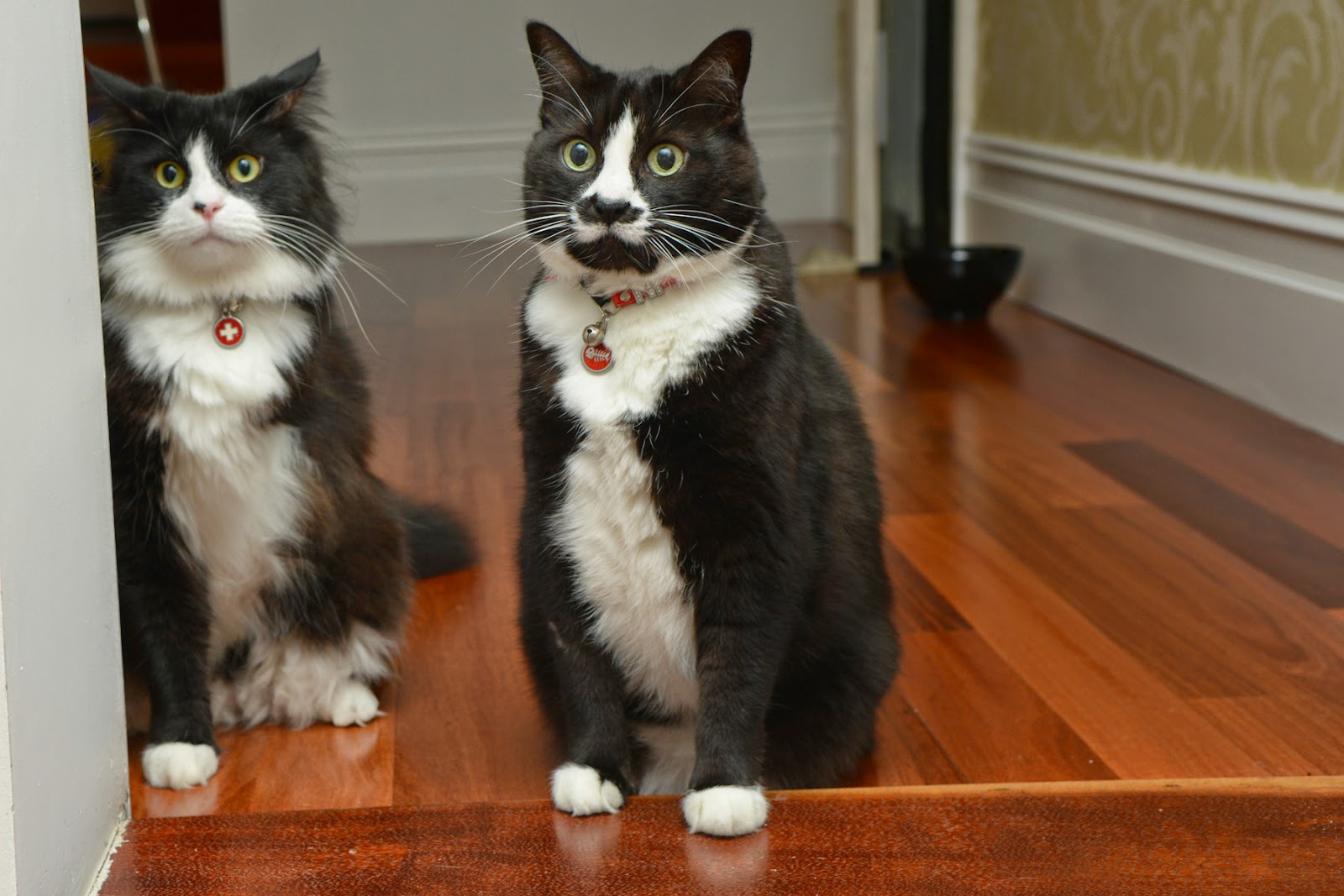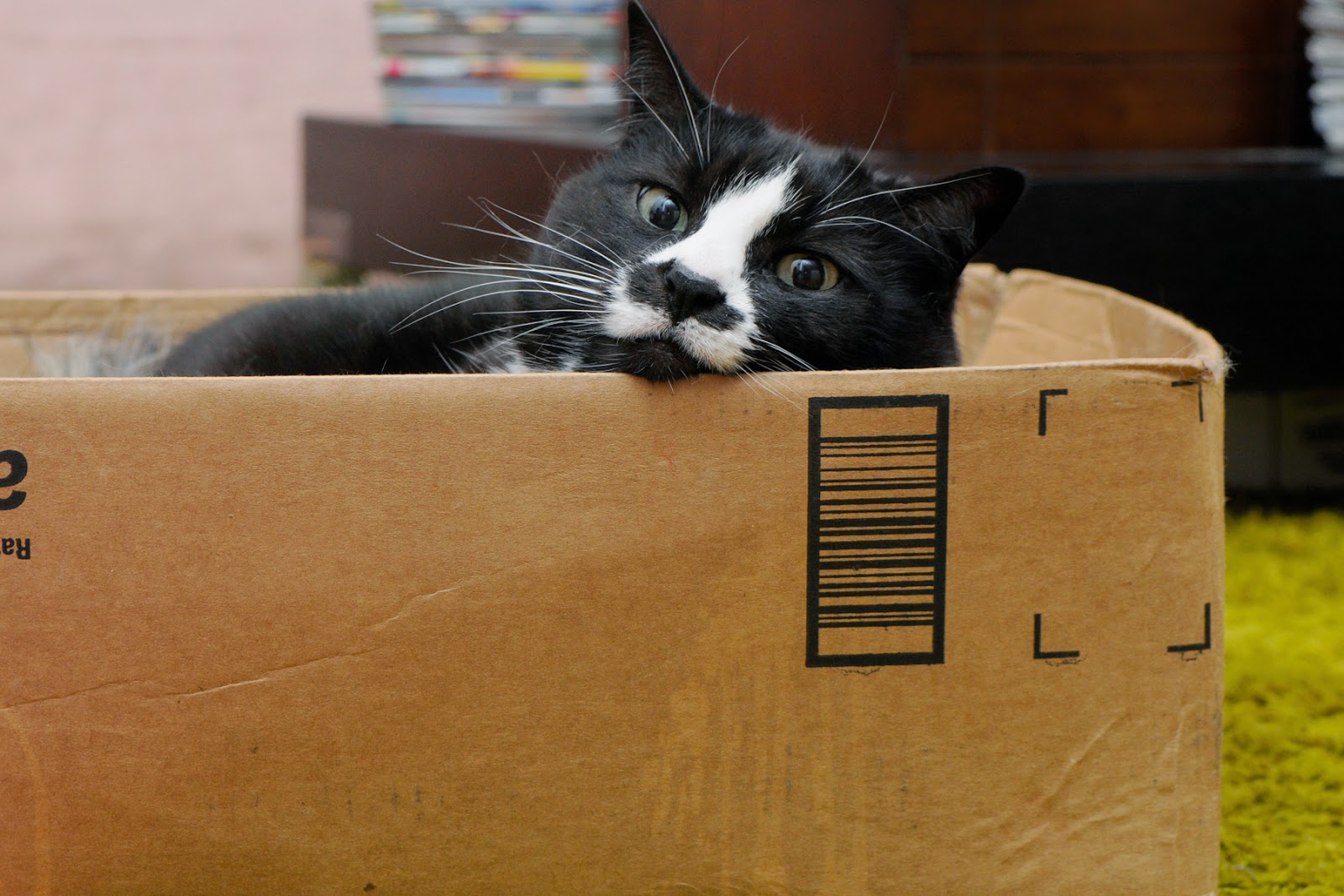 |
| "Ripley" "jumps" out of a "box". |
This week I received a referral letter from a specialist about a procedure performed on one of my patients. The work-up on this patient was nothing short of the gold standard, and the care was excellent. But the letter repeatedly referred to the patient (let's call her Fluffy) as "Fluffy". Not Fluffy. Not Fluff-miester. "Fluffy". In quotation marks. In every instance.
They didn't address me as "Dr Anne" or "Anne", not was it signed by the "specialist". So why this unnecessary quotation marks around the animal's name?
During my undergraduate years I worked in at a major supermarket chain. Someone who worked in the signage department was quotation mark obsessed. Thus we never had a sale on bread, it was always a "sale" on "bread". Makes you wonder - why the need for quotation marks? Is it really a sale? And is that really bread they are selling? I saw customers laugh as they read signs drawing their attention to the "Fresh" mince or "Meat" pies.
Used appropriately, quotation marks indicate dialogue or speech, or indeed to distinguish a quotation from the rest of the text. Over time, quotation marks have been used to denote "irony, emphasis and exception", according to this article from The Guardian.
Let's say I send you an email including the comment, that you are my best friend, you might feel chuffed (or not as the case may be). That changes if I write that you are my "best" friend. Or "best" "friend". The internet is full of examples of misused quotation marks (e.g. here or here).
To refer to a patient's name, such as "Phil", adds a bizarre emphasis, a pause, that makes you wonder - is the letter-writer really thinking that the patient is worthy of a name, or do they think they are simply humouring the owners by treating it as a real pet? I'm not suggesting in this case that the author of the referral letter was of the view that pet names are silly or frivolous. I got the very strong impression that the quotation marks were automated by whatever software she was using.
Maybe it seems like a minor, niggly point to some - but I actually think its worth a mention. Would someone who read this letter take note and question the specialist's beliefs about the status of animals? Maybe they would.
So here is our statement: SAT takes the position that proper names (of non-humans and humans alike) do not require quotation marks - unless we want to suggest they are an alias or pseudonym, and even then that is questionable.
What are your thoughts? Is this petty or does it have profound implications? Has someone ever referred to your "loved one" thus? And how did you interpret it?












